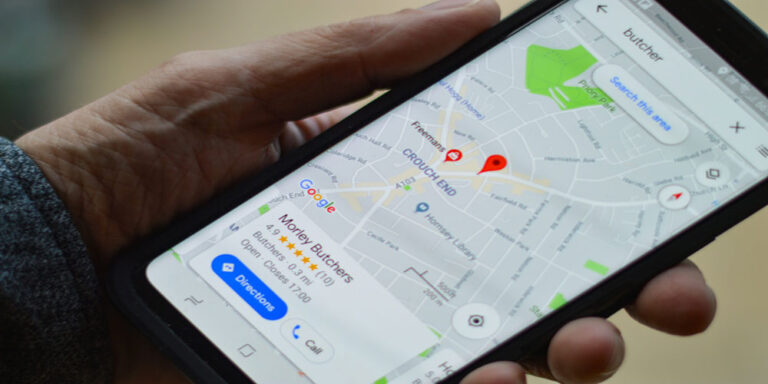
Key Steps for any SEO Campaign
SEO is an essential strategy for any business owner. However, out of all the internet marketing strategies available, SEO takes the most work and time to get right. Once you lay the foundations correctly, you’ll have set the seeds for future traffic to arrive at your website. By creating an SEO-friendly website from the onset or from today, you’ll reap the benefits in the coming months and years.
In this ‘Key Steps for any SEO Campaign’ article, we’re going to check out how to optimize your website for SEO using both on-page and off-page techniques. “On-page” means that the SEO you carry out will be integrated into the actual code of your website, while “off-page” means that you’ll be utilising SEO techniques on other websites to benefit your own.
1. On-Page SEO
Follow this checklist to make sure that you have each of these implemented on your site.
• Optimised Tags: Do your title, meta and heading tags include the keywords you are targeting? On this blog, we’ve written about keyword research extensively, so make sure to check out our other articles for an in-depth take on keyword research.
This is an optimised title tag: “Plumbing Services For The Manchester Area”
This is a black-hat title tag, and may be penalised by Google: “Manchester Plumbing Manchester”. Why is this black-hat, you ask?
Well, it contains keyword stuffing, i.e. it includes the word Manchester twice and it doesn’t provide much help to the reader in terms of the services you offer. Always put user experience ahead of keyword/on-page optimisation.
• Keywords in Content: Sprinkle your targeted keywords sparingly throughout your homepage, including in the meta description, textual content and in paragraphs. However, make sure to use them sparingly. A little bit of keyword magic is the correct dose; you don’t want to abuse keywords by placing them everywhere you can. But make sure that you’ve included your keywords at least twice per page, whether they’re in the title tags or in the text. If you’re writing with user experience in mind, you’ll probably use them anyway.
• PageTime: The time it takes for your website to load up is a major factor Google uses in ranking your website. If your homepage contains an excessive amount of Flash-based animation, video, and stylesheets which are stuffy and unclean, the result will be in a website that’ll take too long to load. Several surveys have found that if a website doesn’t load up in at most ten seconds, the majority of users tend to leave. This is a harrowing statistic, showing just how important Page Speed really is. There’s no use in ranking number one on Google for your keywords, when your website takes too long to load.
You can test the PageSpeed of your website here. The tool will also give you suggestions on how to speed up your website (Suggestions are personalized and tailored to your website.)
• Mobile Optimised: Is your website ready for mobile users? As a webmaster myself, over two thirds of my traffic is mobile. The statistic speaks for itself. If my website wasn’t optimised for mobile, I just might have lost out on all that traffic, without a doubt.
2. Backlinking
Once your website is on-page optimized, you’ll need to start getting links to your website. Google measures the credibility of your website based on the number of backlinks it receives as well as the content you produce. This core idea is what made Google such an accurate search engine, because it accurately measures the authenticity and usefulness of websites with a single metric. In recent years, this method of SEO has waned a little, because Google have accounted other metrics into raising or lowering a website’s status in the search results.
You still should have a few high-quality links pointing to your website. You can garner these through trying out the following:
• Guest Posting: This involves writing an article for another website and then asking them to place a backlink to your website within the article. If your website is “Y”, you need to go to a website that is a similar industry to your own, let’s call it “Z”. You can then write an article for “Z” and ask them to embed a link to “Y” in the article. This is very popular, because it means that these webmasters can get content for free, and you get a link in exchange. Guest posting is no longer as popular as it used to be, but do it right, and you’ll definitely see results.
• Make An Infographic: An infographic is basically a longform graphic that displays information or statistics in an appealing and attractive way. You can design an infographic through many free online tools including Piktochart, which is my favourite. Add statistics to the graphic and facts about your industry. Then, you can contact other websites in the same category or industry as yours and offer them the infographic in exchange for a backlink. Most of the time, these web-owners will be delighted to feature it on their website, because it’s entertaining and valuable for their readers. At the end of your infographic, they can provide a link to your website and also provide some information on your website. That way, you might get new customers and a valuable backlink!
3. Content Creation
Google highly values websites with high-quality articles. If you’re interested in gaining more traffic and raising your rankings in the search results, make sure to create high-quality content!
Here’s an SEO checklist:
• Any articles should be t least seven hundred to a thousand words minimum. This higher word count promotes a better user-experience to Google.
• Include images and make sure that you have appropriate licensing for each image. In other words, don’t just go to Google Images to find images, as they are copyrighted and you’ll get into deep waters. Instead, try searching for images in the public domain such as those on Unsplash.com or Pixabay (there are hundreds more). These websites offer high-quality images for free and you’re allowed to use them on your blog without any licensing. Images greatly enhance the user experience and
• If you know of a fascinating video to embed to the bottom or top of your article, it might help keep your users on your page for longer.
• Make sure to always treat the reader experience first, before any SEO.
• Sprinkle your targeted keywords throughout the article, but use them naturally!
You can create a variety of content from how-to’s to informative articles.
Content creation is an essential step to any SEO campaign, and it greatly enhances the user experience. Make sure that it entertains and informs; once your article is enjoyable to read, the majority of your work is done. All you’ll need is some backlinking and you’ll be well on your way to ascending the ranks. In the pre-Panda times, webmasters valued backlinking over high-quality content. The result was a lot of short, poorly-written articles that had thousands of backlinks, but didn’t offer a good user experience. Nowadays, articles with a small number of valuable backlinks and a long, enjoyable article is a lot more useful to Google.
Final Thoughts on Key Steps for any SEO Campaign
In this guide, we’ve touched on some of the fundamental steps to any SEO campaign. If you want more information on any of the steps mentioned above, just do a quick Google search on them to learn more. There are many, many guides online that’ll help you to carry out SEO efficiently and effectively, and you can use the points mentioned above as stepping stones. If you never checked your website’s PageSpeed, for example, at least now you know of it and you can get started on researching what your site’s speed is and how to lower it.







